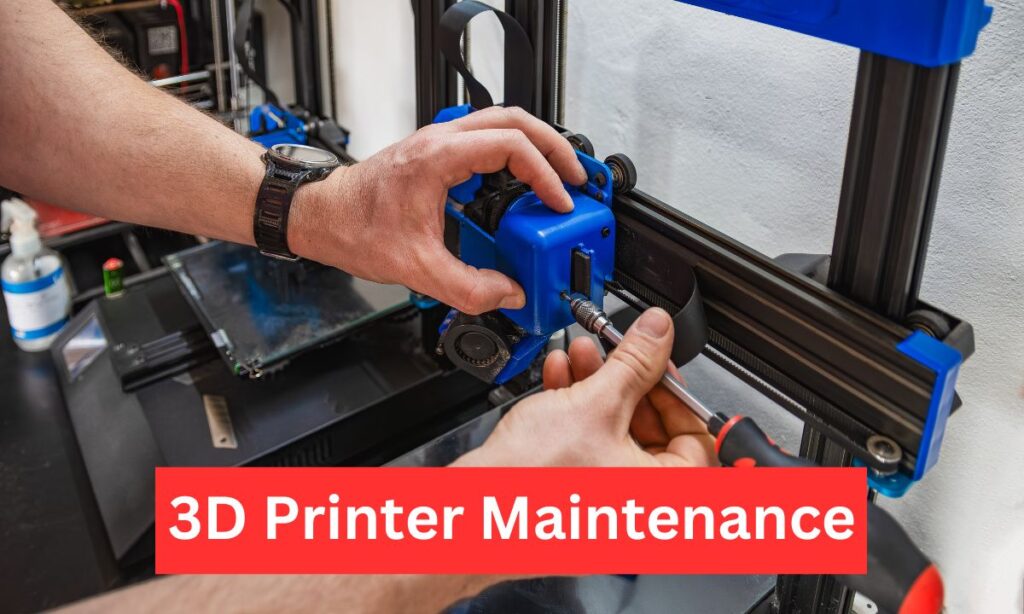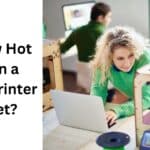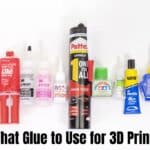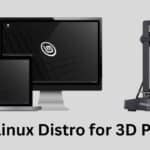
3D printers are incredible tools that enable creativity and innovation, but like any piece of technology, they require regular maintenance to function optimally. Proper care ensures that your printer runs smoothly, delivers high-quality prints, and lasts for years. In this guide, we will discuss everything you need to know about maintaining and caring for your 3D printer.
Why Maintenance is Essential for Your 3D Printer
Affiliate Disclosure
We participate in Amazon affiliate programs, earning fees from qualifying purchases via links at no extra cost to you. It’s how we keep this blog rolling and my 3D printers buzzing with fresh filament for reviews like this one!
Regular maintenance is crucial for keeping your 3D printer in good working condition. Without it, you may experience issues like poor print quality, hardware malfunctions, or complete breakdowns. Routine care not only helps you avoid costly repairs but also extends the lifespan of your printer. By taking care of it, you minimize downtime and enhance performance, ensuring that every print job is precise and efficient.
Essential Tools for 3D Printer Maintenance
Before diving into specific maintenance tasks, it’s important to have the right tools on hand. Here’s a list of essential tools for maintaining your 3D printer:
- Cleaning brushes: Useful for cleaning dust and debris from hard-to-reach areas.
- Lubricants: Necessary for keeping moving parts like rods and bearings in good condition.
- Compressed air: Helps blow out dust and small particles from the printer’s components.
- Nozzle cleaning needles: Effective for removing filament clogs from the nozzle.
- Multimeter: Useful for checking electrical connections and ensuring proper voltage levels.
Having these tools readily available will make routine maintenance easier and more efficient.
Cleaning Your 3D Printer
Cleaning is one of the most important aspects of 3D printer maintenance. It helps prevent clogging, improves print quality, and ensures smooth operation.
Cleaning the Print Bed
A dirty print bed can lead to poor adhesion, resulting in failed prints. Here’s how to clean it:
- Remove leftover filament: After each print, make sure to clean off any residual filament using a scraper or a soft cloth.
- Use isopropyl alcohol: For glass or metal beds, lightly moisten a cloth with isopropyl alcohol and wipe the surface to remove oils and other contaminants.
- Avoid harsh cleaners: Some bed surfaces like BuildTak or PEI can be damaged by strong chemicals, so it’s best to use mild soap and water for cleaning.
Keeping your print bed clean will improve adhesion and reduce the chances of print failure.
Cleaning the Nozzle
Over time, filament can build up inside the nozzle, causing clogs that affect print quality. Here’s how to clean the nozzle effectively:
- Perform a cold pull: Heat the nozzle to the recommended temperature for your filament, then pull the filament out when it’s soft but not fully melted. This will help remove debris.
- Use a cleaning filament: Special cleaning filaments can be run through the extruder to clear out any blockages.
- Needle cleaning: If the nozzle is completely clogged, use a cleaning needle to manually dislodge the obstruction.
Regularly cleaning the nozzle ensures smooth filament extrusion and prevents print defects.
Cleaning Fans and Cooling Systems
Dust buildup in the fans and cooling system can lead to overheating and reduced efficiency. Here’s how to clean them:
- Turn off the printer: Always power down your 3D printer before cleaning.
- Use compressed air: Blow out any dust from the fans and cooling vents. Be gentle to avoid damaging the components.
- Wipe down with a soft cloth: Clean the exterior parts of the cooling system using a dry or slightly damp cloth.
Maintaining a clean cooling system helps prevent overheating and keeps your printer running efficiently.
Lubricating Moving Parts
To keep your 3D printer running smoothly, it’s essential to lubricate moving parts like the rods, rails, and bearings. Here’s a step-by-step process:
- Clean the parts: Before applying lubricant, wipe down the rods, rails, and bearings to remove any dust or debris.
- Apply the correct lubricant: Use a light machine oil or grease recommended by your printer’s manufacturer.
- Spread evenly: After applying the lubricant, move the printer’s parts manually to ensure the lubricant is evenly distributed.
Lubricating these components reduces friction and wear, ensuring smooth movement and improved print accuracy.
Tightening Belts and Checking Tension
Belt tension is a key factor in maintaining print quality. Loose or tight belts can result in layer shifting or misaligned prints. Here’s how to check and adjust belt tension:
- Inspect the belts: Regularly check the belts for any signs of wear or fraying.
- Test the tension: Gently press down on the belts to check if they feel too loose or too tight. They should be firm but not overly tight.
- Adjust the tension: If the belt is too loose, tighten it according to your printer’s guidelines. If it’s too tight, loosen it slightly.
Keeping the belts properly tensioned will ensure that your prints come out clean and precise.
Inspecting Wires and Connections
Loose or damaged wiring can lead to electrical malfunctions in your 3D printer. Regularly inspecting wires and connections can prevent these issues. Here’s how:
- Power off the printer: Always turn off your printer before handling electrical components.
- Check for loose wires: Inspect the wiring around the extruder, heated bed, and power supply for any loose connections.
- Look for wear: Check for any frayed or damaged wires that could cause short circuits or voltage issues.
- Tighten connections: If any wires are loose, tighten them with a screwdriver or the appropriate tool.
Ensuring all connections are secure prevents electrical problems and helps your printer run reliably.
Firmware and Software Updates
Keeping your 3D printer’s firmware and slicing software up to date is important for optimal performance. Here’s how to do it:
- Check for updates regularly: Visit the manufacturer’s website or your printer’s user interface to check for firmware updates.
- Backup settings: Before updating, back up your printer’s current settings to avoid any issues.
- Install the update: Follow the manufacturer’s instructions to safely install the latest firmware version.
- Update slicing software: Ensure your slicer is up to date for the latest features and bug fixes.
Updated firmware and software often include performance improvements, bug fixes, and new features that can enhance your printing experience.
Regular Calibration
Calibration is key to achieving accurate prints. Here are the essential calibration tasks:
- Bed leveling: Ensure your print bed is level before each print. Many printers have an auto-leveling feature, but manual leveling may still be necessary.
- Extruder calibration: Measure and calibrate the extruder to ensure it’s feeding the correct amount of filament.
- Nozzle calibration: Adjust the nozzle height to ensure it’s not too high or too low from the print bed.
Regular calibration improves print quality and helps avoid common issues like warping and layer shifting.
Storing Filament Properly
Proper filament storage is crucial for maintaining its quality. Filament exposed to moisture can become brittle and unusable. Here’s how to store it:
- Use airtight containers: Store filament in airtight containers with desiccants to keep moisture out.
- Use a filament dryer: For particularly humid environments, use a filament dryer before printing.
- Keep away from direct sunlight: Store filament in a cool, dry place to avoid heat and UV exposure.
Properly stored filament will retain its quality and deliver consistent printing results.
Routine Maintenance Schedule
Establishing a regular maintenance schedule will help you keep track of what needs to be done and when. Here’s a sample checklist:
- Daily: Clean the print bed, check for filament debris.
- Weekly: Inspect belts, clean fans, check nozzle for clogs.
- Monthly: Lubricate moving parts, inspect wiring, perform calibration.
Following this schedule ensures that you stay on top of your printer’s care and avoid unexpected issues.
Conclusion
Maintaining your 3D printer is essential for prolonging its life and ensuring high-quality prints. From cleaning the print bed and nozzle to lubricating moving parts and tightening belts, regular maintenance keeps your printer running smoothly. By following the tips in this guide and sticking to a routine maintenance schedule, you can enjoy consistent, reliable performance from your 3D printer for years to come.
Frequently Asked Questions (FAQs)
How often should I perform maintenance on my 3D printer?
It’s recommended to clean and inspect your 3D printer after every few prints, with more thorough maintenance, like lubrication and calibration, done monthly.
What is the best way to clean a 3D printer nozzle?
You can use a cleaning filament, perform a cold pull, or use a needle to remove blockages and ensure smooth filament flow.
How do I lubricate my 3D printer’s moving parts?
Apply a light machine oil or manufacturer-recommended lubricant to the rods, rails, and bearings after cleaning off dust and debris.
Why does my 3D printer bed need to be leveled regularly?
Bed leveling ensures that the first layer adheres properly to the surface, preventing warping or failed prints. Check bed level before each print.
How should I store 3D printer filament to avoid moisture damage?
Store filament in airtight containers with desiccants or use a filament dryer to keep it free from moisture, which can degrade print quality.













